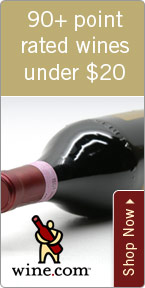For Winemakers, It’s All In The Yeast

Wednesday - January 20, 2010
| Share
 Del.icio.us
Del.icio.us“Day-o, Daaaaay-o, Daylight come and we wanna go home ...”
Listening to Harry Belefonte singing about counting bananas got me thinking of how some white wines can smell just like ripe bananas.
No, it doesn’t come from banana patches near the vineyard.
In fact, it rarely comes from the terroir of the varietal used at all. It is a function of the yeast.
Yeast is one of the all-important required elements for making wine. The yeast reacts with the sugar in the grape juice to create alcohol, carbon dioxide gas and some heat.
And just as important to know is that there are many yeast strains present in the vineyards on the grape skins themselves. We call this wild or ambient yeast.
The other type of yeast available to winemakers is cultured yeast. This usually comes from a laboratory where certain strains of yeast have been isolated and procreated for use in fermentation.
Cultured yeast strains have been studied, analyzed and chosen for specific characteristics. One is for their ability to withstand elevated alcohol levels. Interestingly enough, yeast is somewhat suicidal. It produces alcohol, which also kills it. As the levels of alcohol climb, the yeast starts dying off. Some yeast strains, however, have been found to resist higher levels of alcohol than others. This is advantageous for winemakers who are making wines with relatively high alcohol: Think BIG Zins, Shiraz, Cabernets and even Chardonnays that reach 15 percent or higher ABV.
Yeast is also isolated for the flavor it can give the wine. Duh! It would be hard to imagine that such an important ingredient would not bring any flavor the final result. Cultured yeast strains can add flavors ranging from banana to bubble gum to even lemon or leather.
Each winemaker can almost choose “by flavor” as to what lab yeast they would like to use to best suit their goals.
Another benefit of cultured yeast is that it is more “reliable” in starting and finishing fermentation than wild yeast. Some producers must add cultured yeast after the fermentation is started with the wild yeast because the wild yeast isn’t strong enough to ferment out all the sugar in the wine.
Cultured yeasts are “cleaner,” meaning they produce less congeners and are more reliable than wild yeast. Those congeners (other flavors and aromas) that are produced by wild yeast are viewed by many as complexity. The ambient or present yeast in a vineyard can be unique and lends itself to the identity and individuality of the wine. Some would even call it integral in the terroir of a vineyard, village or appellation.
In the end, it is the winemaker’s philosophy and goal as to which yeast they decide upon. So, no, they don’t add a beautiful bunch of ripe bananas to the wine. It’s all in the yeast.
Recommendations: 2007 Layer Cake 2007 Shea Cellars Pinot Noir ($45) Dick Shea sells fruit from his revered Shea Vineyard to some of the top winemakers in the business, and then keeps some of the best for himself. This is a pretty and elegant wine with tons of bright cherry and a Burgundian sensibility to it.
Roberto Viernes is a master sommelier. E-mail .(JavaScript must be enabled to view this email address)E-mail this story | Print this page | Comments (0) | Archive | RSS Comments (0) |
Most Recent Comment(s):












